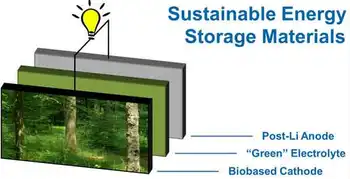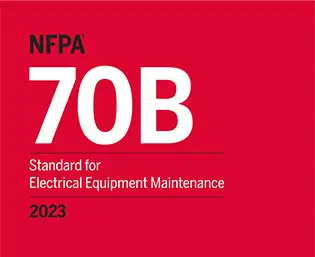CEC Allocates $30 Million for 100-Hr Long-Duration Energy Storage Project

NFPA 70b Training - Electrical Maintenance
Our customized live online or in‑person group training can be delivered to your staff at your location.

- Live Online
- 12 hours Instructor-led
- Group Training Available
California Iron-Air Battery Storage Project delivers 100-hour long-duration energy storage, supported by a $30 CEC grant, using Form Energy technology at a PG&E substation to boost grid reliability, integrate renewables, and cut fossil reliance.
Key Points
California's 5 MW/500 MWh iron-air battery delivers 100-hour discharge, boosting reliability and renewable integration.
✅ 5 MW/500 MWh iron-air system at a PG&E substation
✅ 100-hour multiday storage enhances grid reliability
✅ CEC $30M grant backs non-lithium, long-duration tech
The California Energy Commission (CEC) has given the green light to a $30 million grant to Form Energy for the construction of an extraordinary long-duration energy storage project that will offer an unparalleled 100 hours of continuous grid discharge.
This ambitious endeavor involves the development of a 5-megawatt (MW) / 500 megawatt-hour iron-air battery storage project, representing the largest long-duration energy storage initiative in California. It also marks the state's inaugural utilization of this cost-effective technology, and joins ongoing procurements by utilities such as San Diego Gas & Electric to expand storage capacity statewide. The project's location is set at a substation owned by the Pacific Gas and Electric Company in Mendocino County, where it will supply power to local residents. The system is scheduled to commence operation by the conclusion of 2025, contributing to grid reliability and showcasing solutions aligned with the state's climate and clean energy objectives.
CEC Chair David Hochschild commented, "A multiday battery system is transformational for California's energy mix. This project will enhance our ability to harness excess renewables during nonpeak hours for use during peak demand, especially as we work toward a goal of 100 percent clean electricity."
This grant award represents one of three approvals within the framework of the CEC's Long-Duration Energy Storage program, a part of Governor Gavin Newsom's historic multi-billion-dollar commitment to combat climate change. This program fosters investment in the demonstration of non-lithium-ion technologies across the state, including green hydrogen microgrids, contributing to the creation of a diverse portfolio of energy storage technologies.
As of August, California had 6,600 MW of battery storage actively deployed statewide, a trend mirrored in regions like Ontario as well, operating within the prevailing industry standard of 4 to 6 hours of discharge. By year-end, this figure is projected to expand to 8,600 MW. Longer-duration storage, spanning from 8 to 100 hours, holds the potential to expedite the state's shift away from fossil fuels while reinforcing grid stability. California estimates that more than 48 gigawatts (GW) of battery storage and 4 GW of long-duration storage will be requisite to achieve the objective of 100 percent clean electricity by 2045.
Energy storage serves as a cornerstone of California's clean energy future, offering a means to capture and store surplus power generated by renewable resources, including emerging virtual power plant models that aggregate distributed assets. The state's battery infrastructure plays a pivotal role during the summer when electricity demand peaks in the early evening hours as solar resources decline, preceding the later surge in wind energy.
Iron-air battery technology operates on the principle of reversible rusting. These battery cells contain iron and air electrodes and are filled with a water-based, nonflammable electrolyte solution. During discharge, the battery absorbs oxygen from the air, converting iron metal into rust. During the charging phase, the application of an electrical current converts the rust back into iron, releasing oxygen. This technology is cost-competitive compared to lithium-ion battery production and complements broader clean energy BESS initiatives seen in New York.











